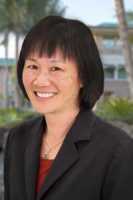
01 Sep USPSTF: Screening for Diabetes Should Begin at Age 35
MedicalResearch.com Interview with:

Dr. Chien-Wen Tseng
Dr. Chien-Wen Tseng M.D., M.P.H., M.S.E.E.
Professor, Associate Research Director
Department of Family Medicine and Community Health
University of Hawaii John A. Burns School of Medicine
Hawaii Medical Service Association Endowed Chair
MedicalResearch.com: What is the background for this study? What are the main recommendations?
Response: Diabetes is the seventh leading cause of death in the United States and raises a person’s risk for heart disease, stroke, kidney failure, and even blindness and limb amputation.
The Task Force recommends screening for prediabetes and type 2 diabetes in adults who are 35 to 70 years old and have overweight or obesity, which is one of the leading risk factors for diabetes. By screening, we can detect prediabetes and type 2 diabetes early and prevent these conditions from getting worse and leading to serious health problems.
MedicalResearch.com: What should readers take away from your report?
Response: The biggest change is the Task Force lowered the recommended screening age to 35. We previously recommended screening at age 40 but diabetes is increasing and occurring at a younger age. While adults can get diabetes at any age, the latest evidence shows that it is critical to start screening at 35 years old in persons with overweight or obesity. This is an update to the Task Force’s 2015 recommendation statement.
MedicalResearch.com: What recommendations do you have for future research as a result of this work?
Response: The Task Force is calling for more research to make better screening recommendations for racial and ethnic groups that have much higher rates of diabetes, such as Black, Latino, and Native populations. It’s important to understand that higher rates of diabetes in some communities is often due to social factors that prevent healthy lifestyles such as socioeconomic status, access to food, and physical environment.
MedicalResearch.com: Is there anything else you would like to add?
Response: Screening for diabetes is done with a simple test for blood sugar levels. If everyone with overweight or obesity gets screened for diabetes starting at age 35 instead of 40, we can get a valuable head start on preventing life-threatening health issues down the road. For prediabetes, patients have a chance to prevent diabetes through healthy diet and exercise or if needed, medications. Clinicians should work with their patients with prediabetes to decide which preventive intervention is best for them.
Citation:
1.US Preventive Services Task Force. Screening for Prediabetes and Type 2 Diabetes: US Preventive Services Task Force Recommendation Statement. JAMA. 2021;326(8):736–743. doi:10.1001/jama.2021.12531
2. Jonas DE, Crotty K, Yun JDY, et al. Screening for Prediabetes and Type 2 Diabetes: Updated Evidence Report and Systematic Review for the US Preventive Services Task Force. JAMA. 2021;326(8):744–760. doi:10.1001/jama.2021.10403
3. Gregg EW, Moin T. New USPSTF Recommendations for Screening for Prediabetes and Type 2 Diabetes: An Opportunity to Create National Momentum. JAMA. 2021;326(8):701–703. doi:10.1001/jama.2021.12559
[subscribe]
[last-modified]
The information on MedicalResearch.com is provided for educational purposes only, and is in no way intended to diagnose, cure, or treat any medical or other condition. Always seek the advice of your physician or other qualified health and ask your doctor any questions you may have regarding a medical condition. In addition to all other limitations and disclaimers in this agreement, service provider and its third party providers disclaim any liability or loss in connection with the content provided on this website.
Last Updated on September 1, 2021 by Marie Benz MD FAAD
